We're back in Delhi after a week on the road. Three days in Agra, home of the Taj Mahal, and four days in Jaipur, capital of Rajisthan. Alot has happened so it's hard to remember it all much less get it written down, but here are some of the highlights:
When we arrived in Agra we hired a friendly english-speaking autorickshaw driver named UK to take us on a small tour of the city. This, we're learning, is often the best way to get around when siteseeing - hire someone for the entire day and pay a flat fee. UK charged us 250 rupees (about $5.50) for the better part of the afternoon and evening (we later learned that we'd paid too much - in Jaipur we paid 250 for the entire day). But as I said UK was friendly, personable and quite knowledgable. He took us first to the 'Baby Taj', a palace similiar to the Taj itself in structure, though older, smaller and made of red sandstone as opposed to white marble.
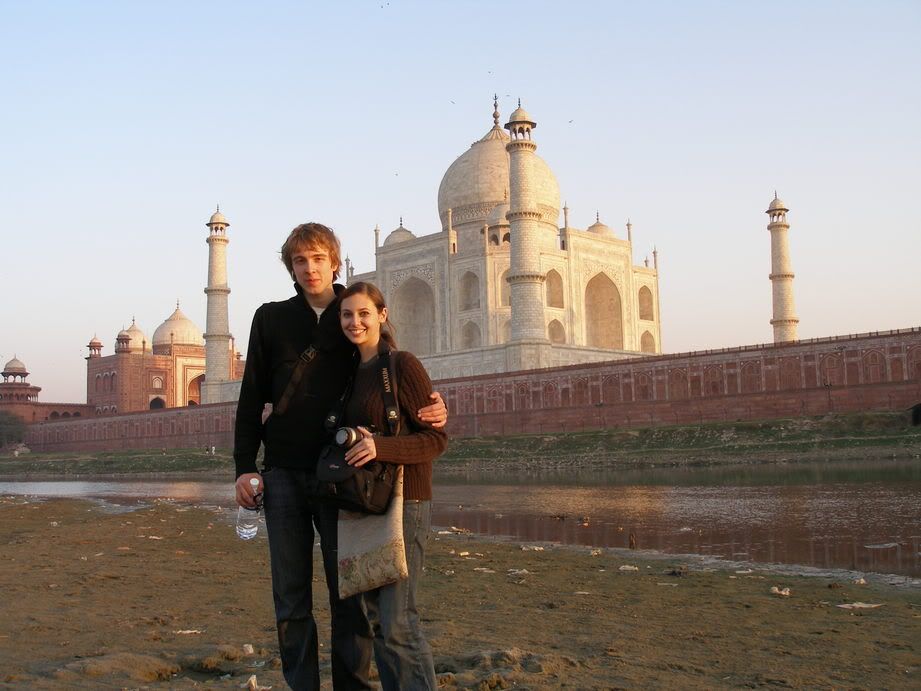
Next we drove to a park behind the Taj Mahal, where people gather to watch the sunset. It was a tranquil place - a sandy beach that is under water during the monsoon season - separated from the imposing Taj by a small river.
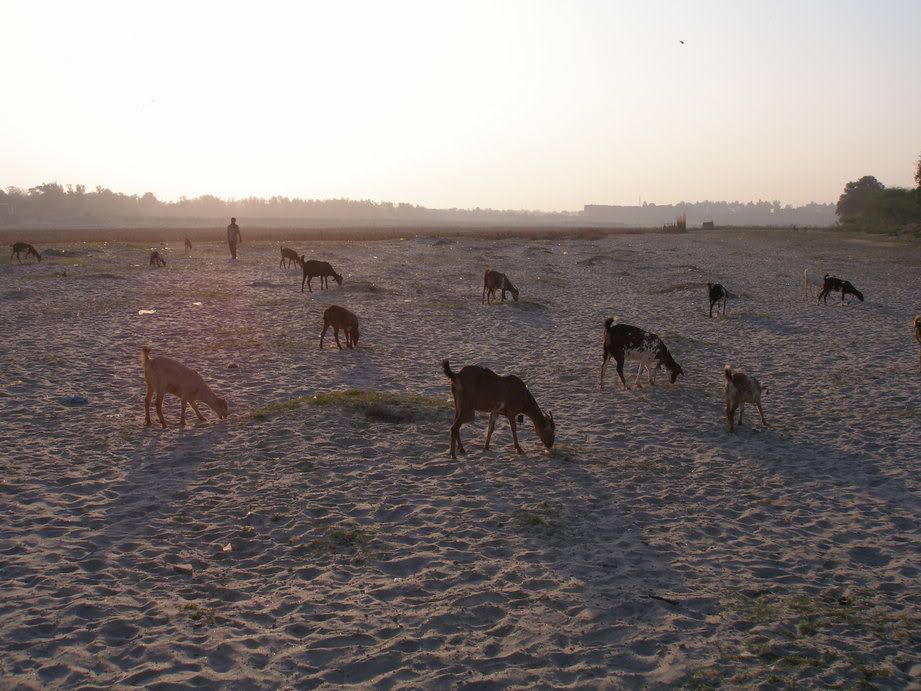
A boy was riding a camel and offering rides to tourists, while several other children played cricket in the sand.
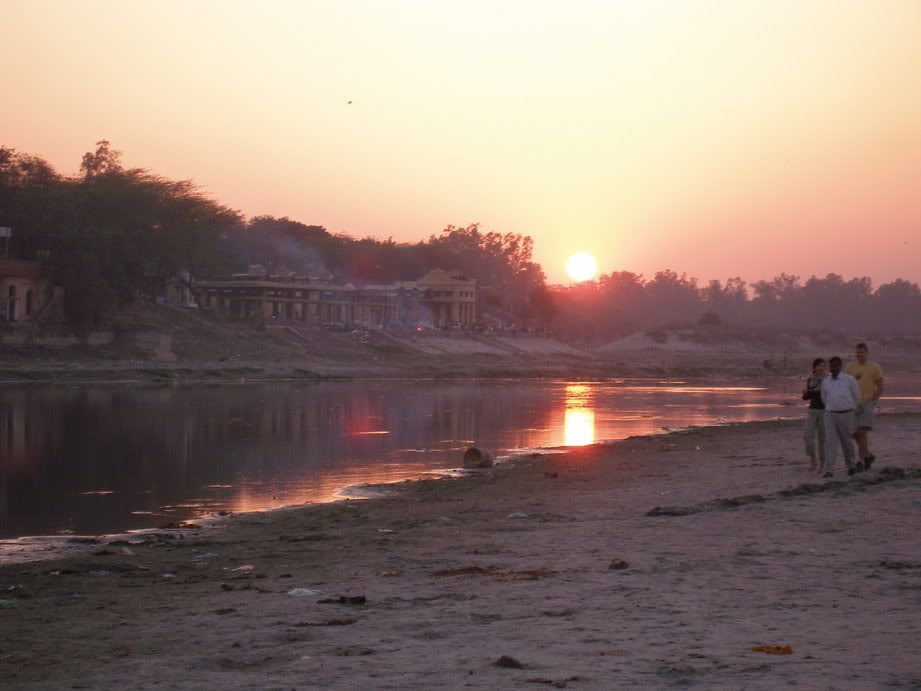
This was the most beautiful way to see the Taj - probably more striking and memorable than seeing it from the front.
After that we watched a marble inlay demonstration and a government run emporium, as well as a weaving demonstration.
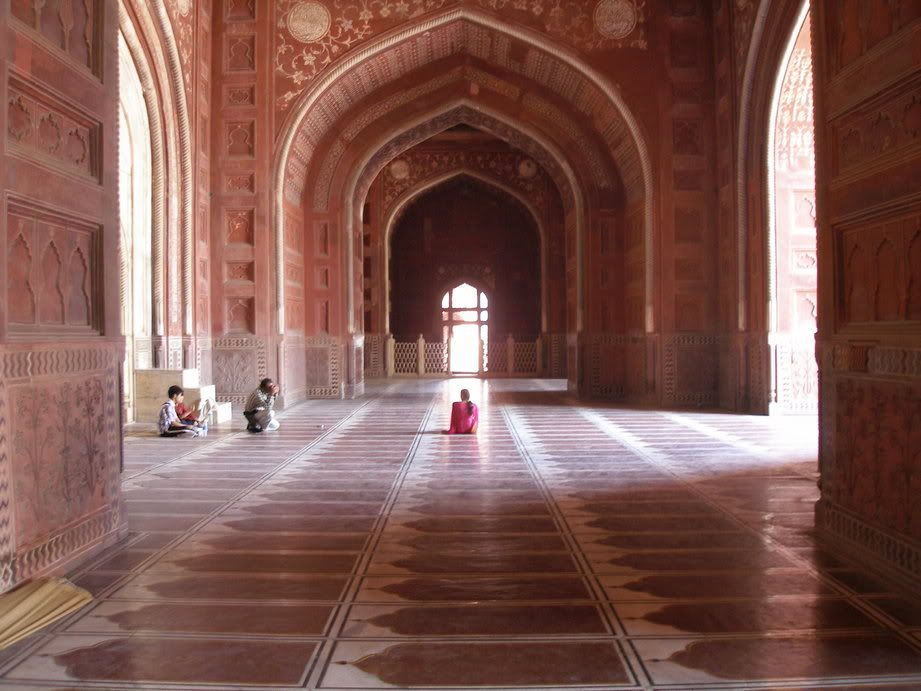
The next day we had a simple and excellent egg breakfast at our hotel before taking a short (17 rupee) bus ride to Fatehpur Sikri, a fortified 'ghost city' that was briefly the capital of the Mughal empire (before being abandoned during a drought).
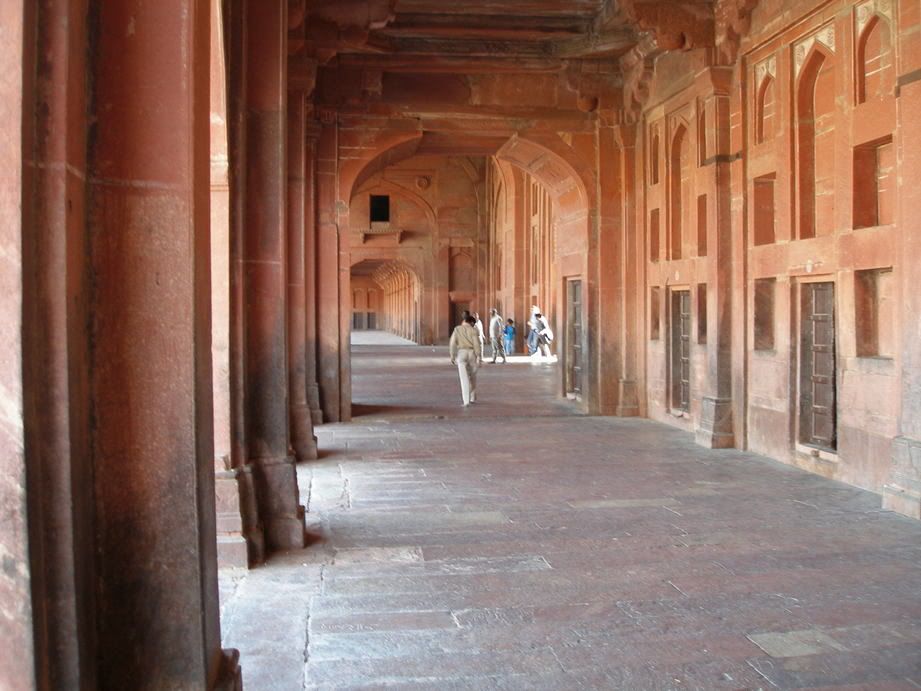
We saw a beautiful mosque and a sprawling complex of open buildings, set out along the hillsides, that were apparently once the playgrounds of the ruling family (one pool was originally used for 'private events and royal amusements').
The next day we ate breakfast at an inexpensive rooftop restaurant called Hotel Kamal, that had a spectacular view of the Taj Mahal. It was our final day in Agra, and so of course we spent it wandering the gardens and mosques flanking the Taj - one can't spend much time in the Taj itself, as there is only one small room open to the public.
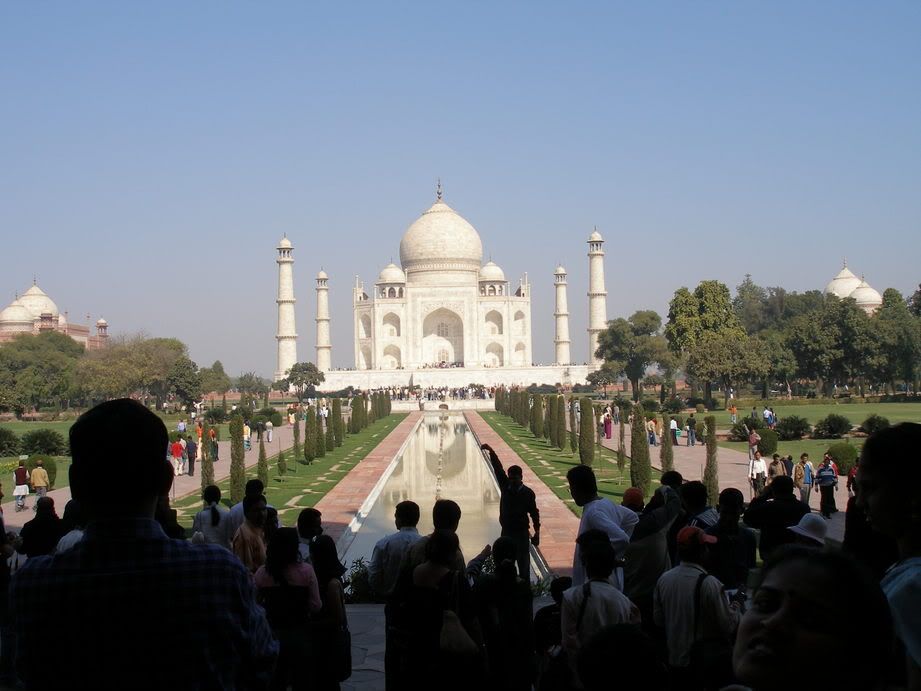
The inlay work in this room, however, is amazing (unfortunately no pictures are allowed). We'd been given a short briefing earlier on the process for making this kind of design - a small 2" flower can be made of fifteen or twenty pieces, each carved from a different kind of stone and originating from a different country, and then arranged to fit into shallow spaces carved out of the marble itself. The kind of concentration, dedication and training this must require is evidenced by the fact that the people who today maintain the Taj, replacing pieces that are lost or go missing, are the ancestors of the craftsmen who first built it.
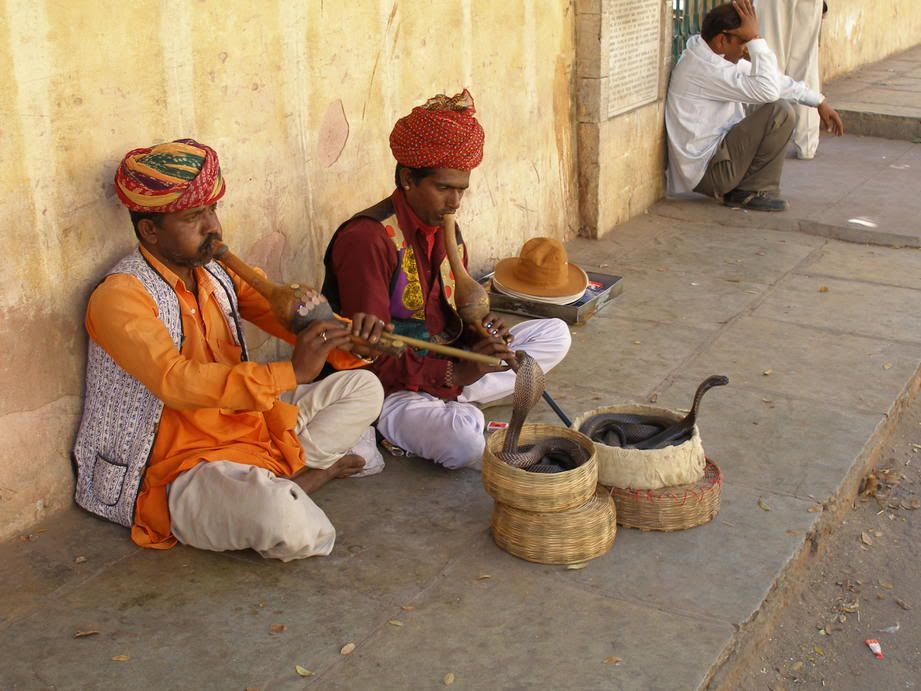
That evening we took a train to Jaipur.
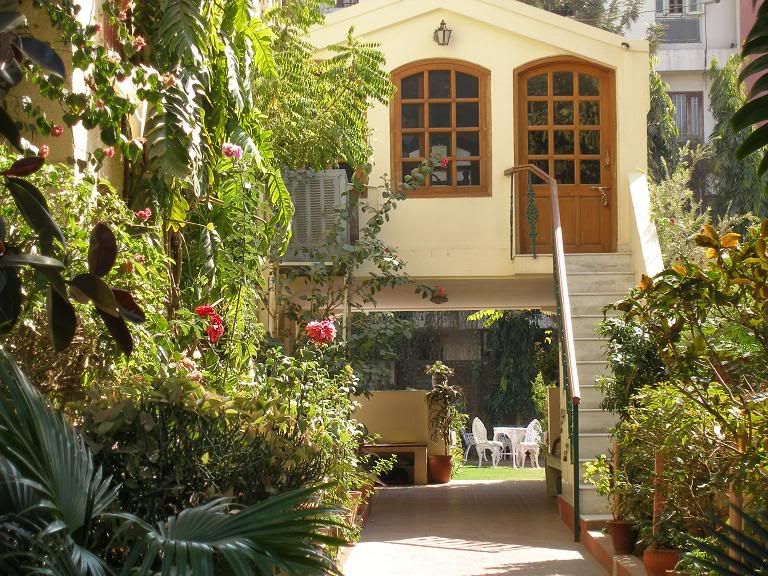
By the time we arrived it was already after 10, and a car from our hotel picked us up at the station. The next day we started small by visiting the Jantar Mantar, an observatory built in the 18th century. 'A rich boy's toys,' as a fellow tourist described it, they included some enormous instruments for taking astronomical measurements, including two sundials (the first one wasn't big enough), holes in the ground twenty feet across that contained marble maps used for measuring the sun's path in the sky, and one large specialized sundial for each of the twelve zodiac signs. Still exhausted from our train trip and adjusting to the lightning pace of Jaipur, which makes Manhattan traffic look tranquil and a pushy American used-car-salesman look genteel, we headed back to the hotel early for a dinner of south indian food, macaroni-and-cheese and gulab jamun (if you have never heard of the latter - it is an excellent desert found in most indian restaurants - lightly fried batter resting in tasty syrup and served steaming hot - Rachel is currently searching for the best Gulab Jamun, and with any luck should have a book's worth of material on the subject ready by the time we return).
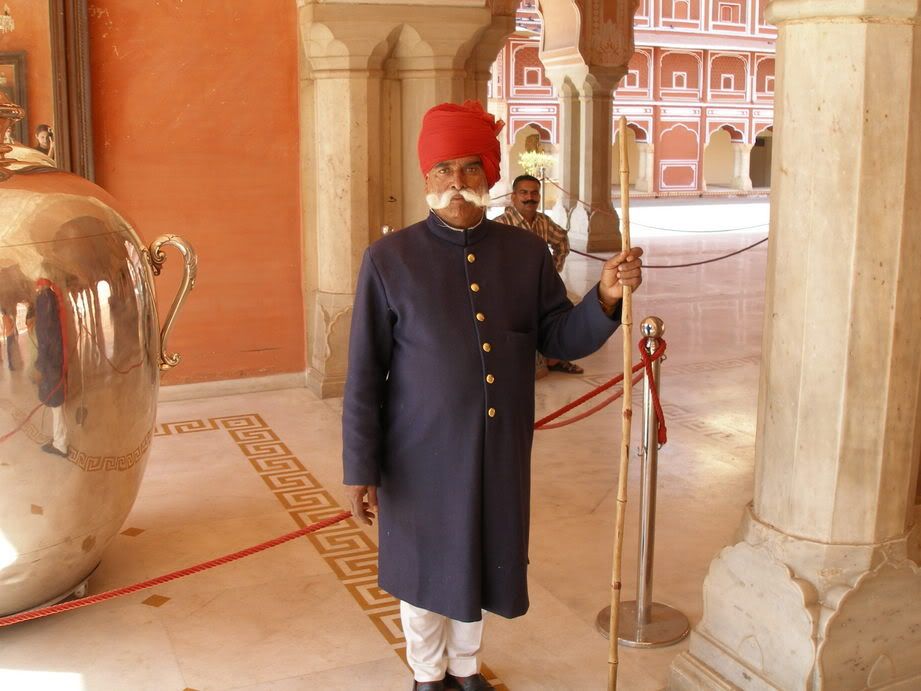
The next day we saw the Hawa Mahal, a beautiful, honeycomb-like structure in the center of downtown that was formerly used by royal ladies for 'peoplewatching', and the City Palace, where we took the picture of the regal guard with the mustache. After an amazing Thali lunch (and Gulab Jamun) we took our rented Auto, via a long and twisted mountain-side road, to the Tiger Fort, which sits atop the mountains that almost completely surround the city of Jaipur. This was maybe the most amazing site we'd seen thus far.
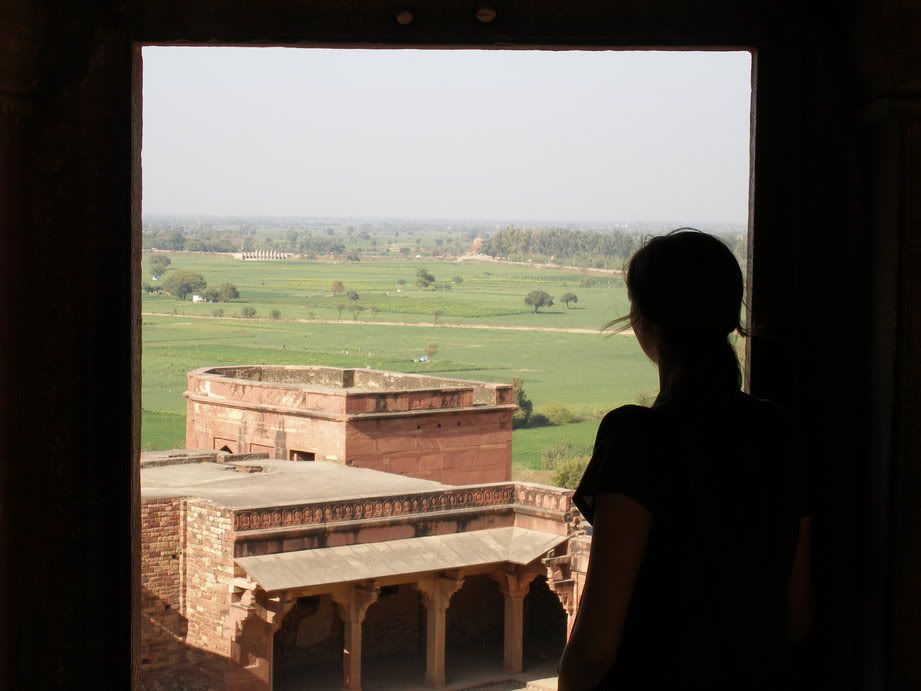
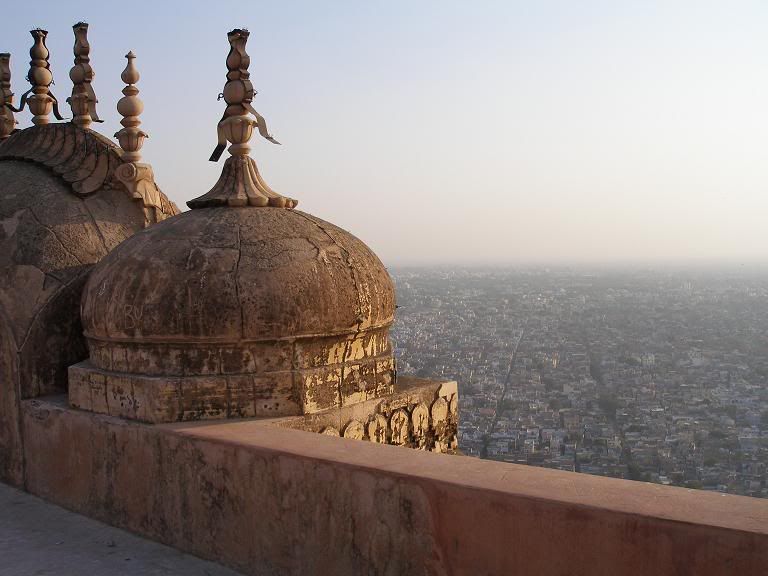
Tranquil, isolated and swarming with monkeys, the Tiger Fort was beautiful architecturally and it afforded the most incredible views of the sprawling city below (we have pictures of this as well, and will get them up soon).
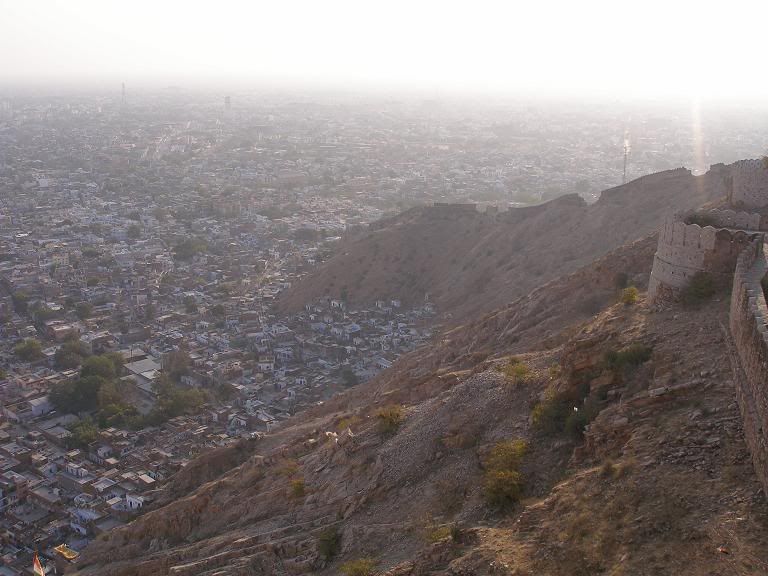
Here are more pictures of the views from Tiger Fort.
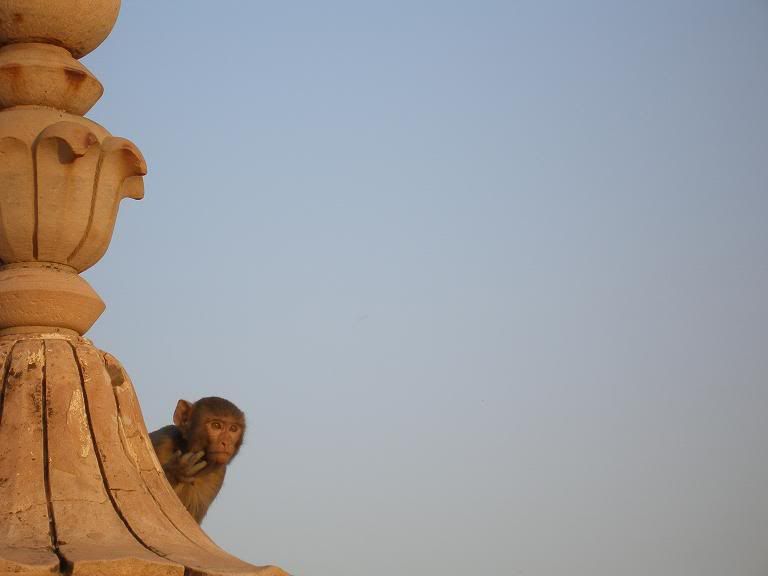
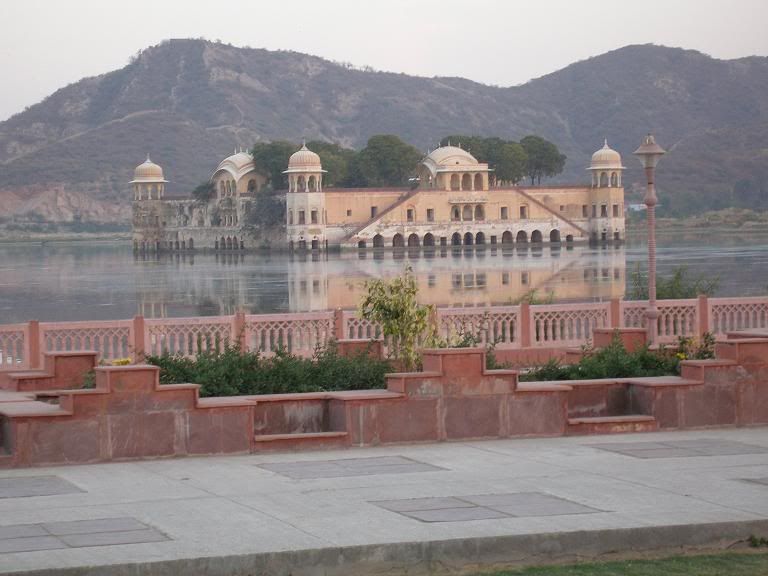
Here's a view of the Water Palace, which we saw on the way back from the Tiger Fort.
The next was our last day in Jaipur, and in what time we had before our afternoon train we ate lunch at the 56m-tall revolving restaurant in the center of town. It was probably our most expensive meal thus far, running somewhere around 500 rupees (about 12 dollars).
Now we're back in Delhi and we're planning our next two trips. For the first we'll be heading north - probably to a hill station, hopefully with a view of the Himalayas. Aftewards we'll be taking a longer trip, three weeks or so, starting in Kerala and then working our way north via Goa and Bombay.
So that's it for now. Sorry for the lengthy post. Keep commenting - we're both really happy to hear from you. Our time in India is quickly being filled with travel plans - so please send any special shopping requests as soon as you think of them.
Be well,
Love,
Danny and Rachel

2 Comments:
Hi,
I printed out the pics for your mom :-)
Mel
Pictures are wonderful! Keep those cards and letters comlng in! Ed.
Post a Comment
<< Home